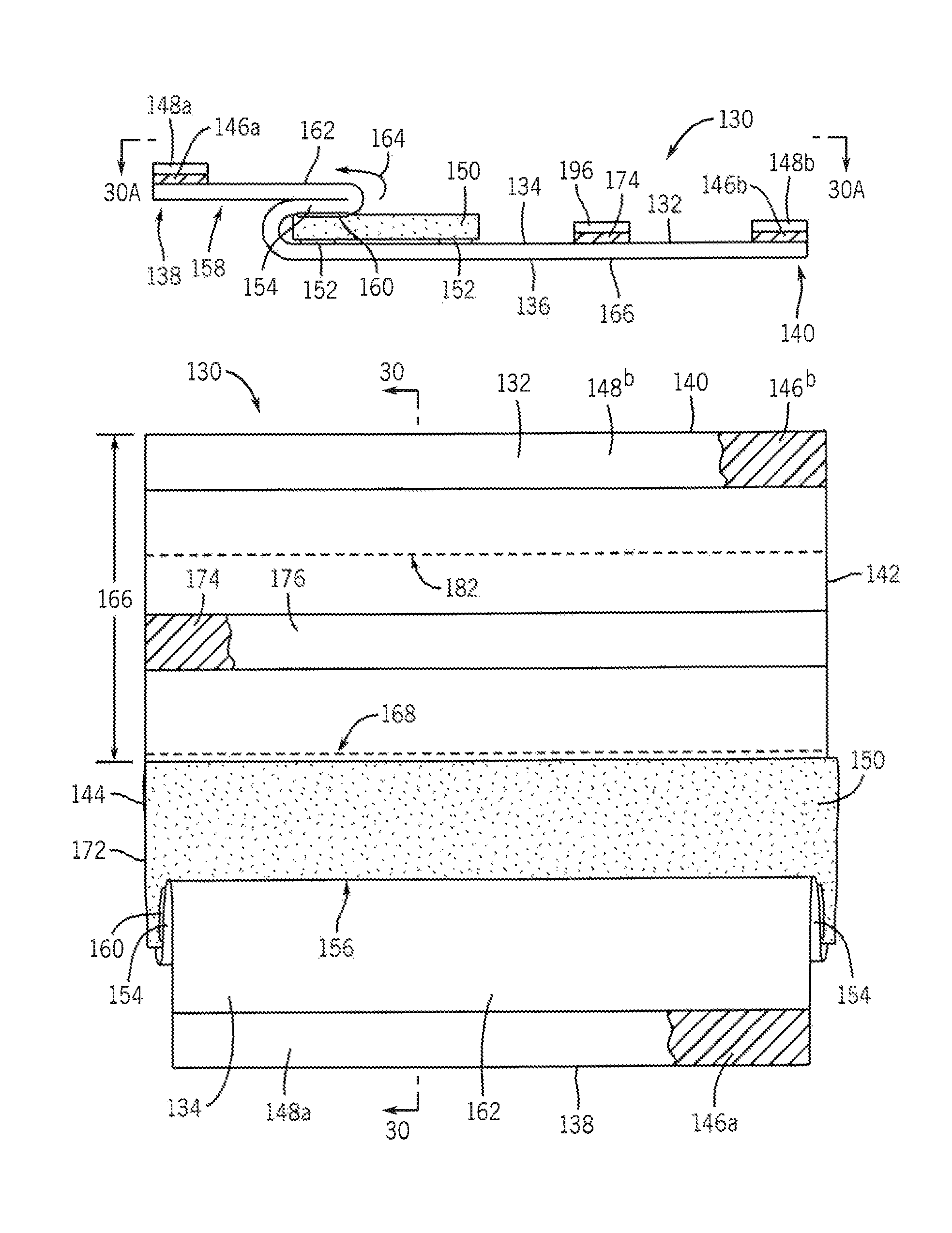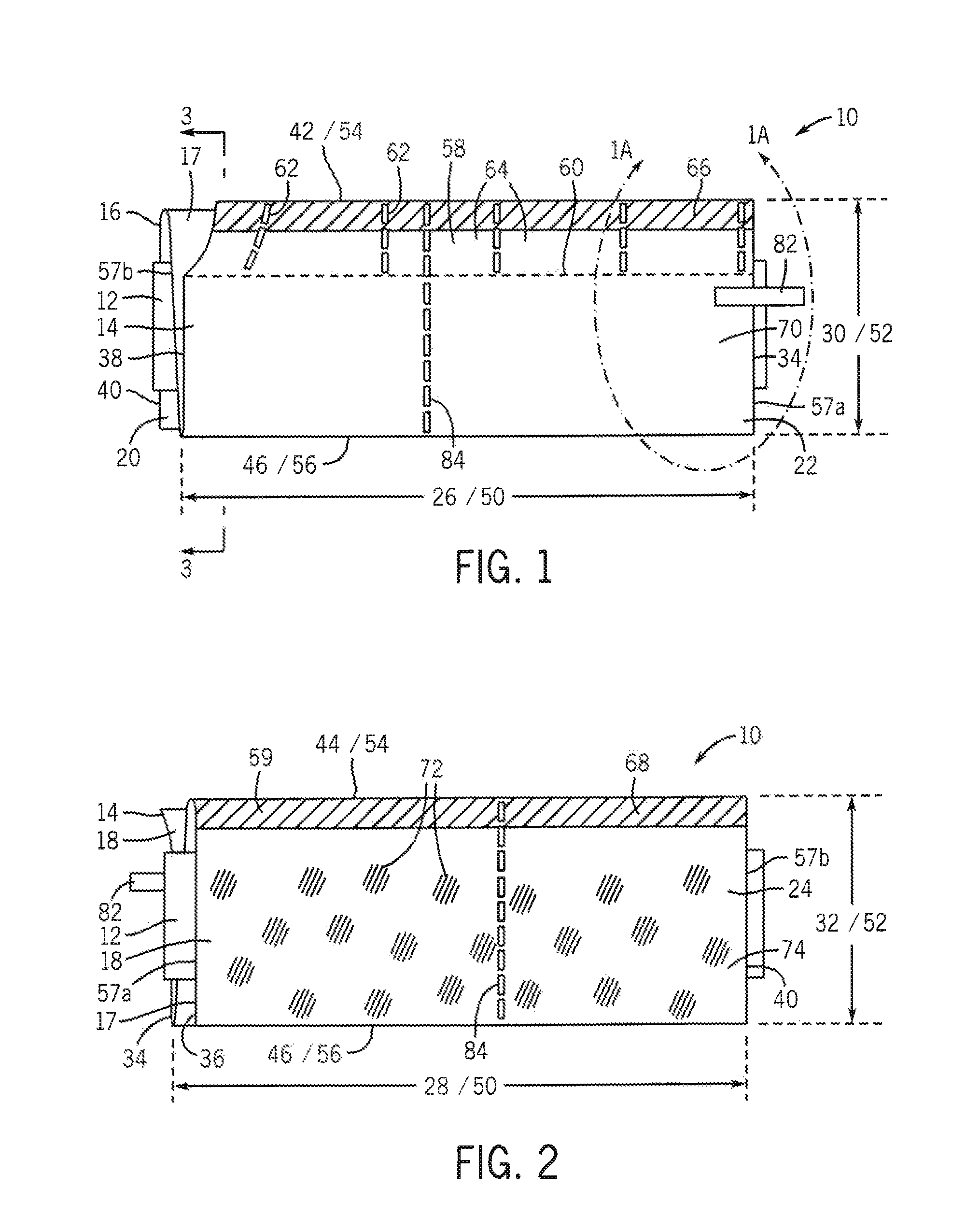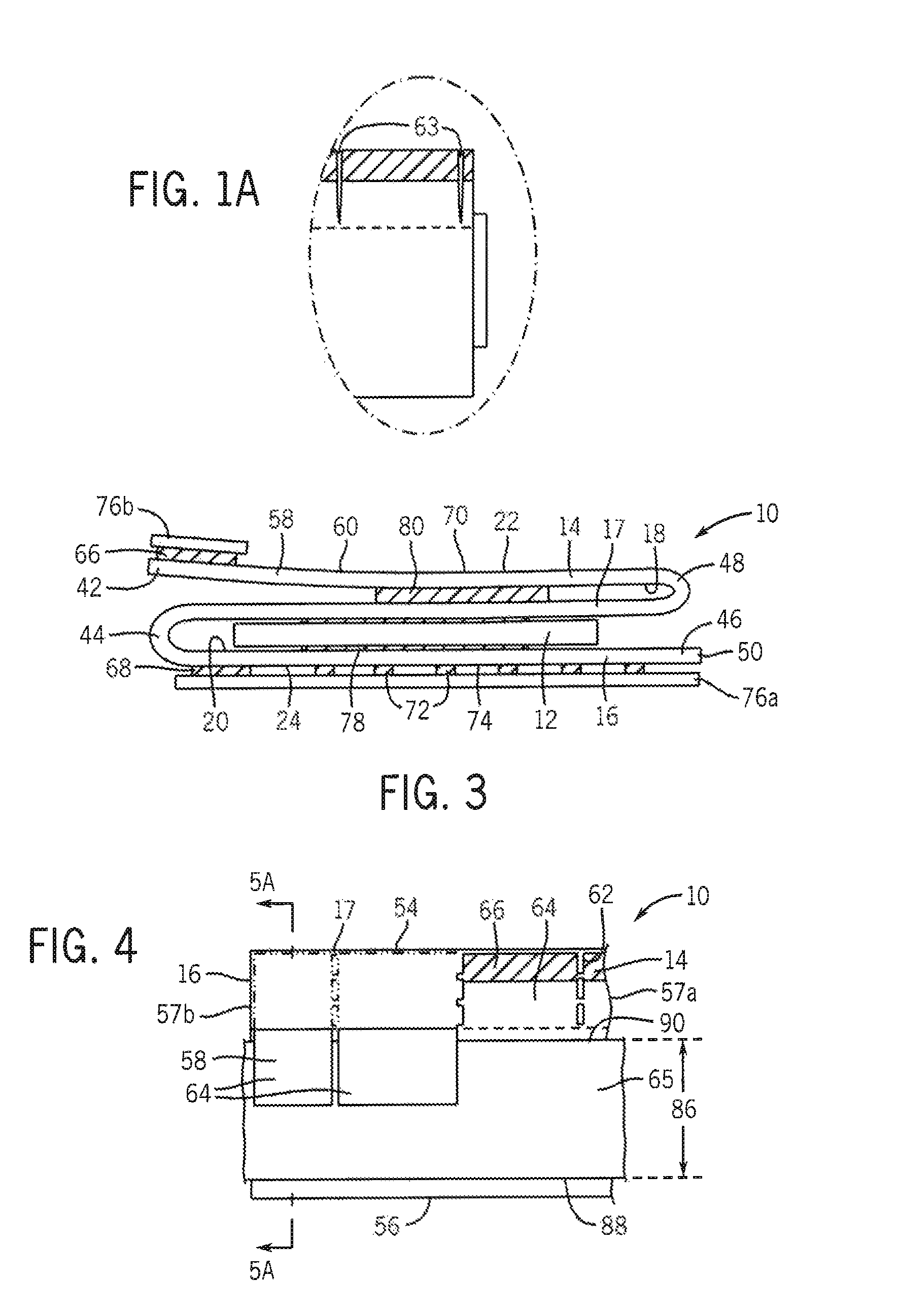Tourniquet padding
a technology of tourniquets and padding, which is applied in the field of disposable padding, can solve the problems of slipping, skin injury, and difficulty in using padding under a tourniquet, and achieve the effect of prolonging the length of the cover sheet and keeping it from sliding distally
- Summary
- Abstract
- Description
- Claims
- Application Information
AI Technical Summary
Benefits of technology
Problems solved by technology
Method used
Image
Examples
Embodiment Construction
[0052]The present invention encompasses a tourniquet padding for use with a tourniquet, and methods for making and using the tourniquet padding.
[0053]As used herein, the term “upper extremity” refers to the “arm” of a person including the shoulder, arm, elbow, forearm, wrist and hand. The term “lower extremity” refers to the “leg” of the person including the hip, thigh, knee, calf, ankle and foot.
[0054]A first embodiment of a tourniquet padding 10 of the present invention is described with reference to FIGS. 1-5. As shown, the tourniquet padding 10 comprises a padding material 12 disposed between a first (outer) cover sheet 14 and a second (inner) cover sheet 16. As depicted, the cover sheets 14, 16 are formed from a unitary sheet that is folded into at least three overlying layers to form the two cover sheets and one or more inner sheets 17. The padding layer 12 is positioned between the second cover sheet 16 and the inner sheet and provides a cushioning effect. In any of the embod...
PUM
 Login to View More
Login to View More Abstract
Description
Claims
Application Information
 Login to View More
Login to View More - R&D
- Intellectual Property
- Life Sciences
- Materials
- Tech Scout
- Unparalleled Data Quality
- Higher Quality Content
- 60% Fewer Hallucinations
Browse by: Latest US Patents, China's latest patents, Technical Efficacy Thesaurus, Application Domain, Technology Topic, Popular Technical Reports.
© 2025 PatSnap. All rights reserved.Legal|Privacy policy|Modern Slavery Act Transparency Statement|Sitemap|About US| Contact US: help@patsnap.com



